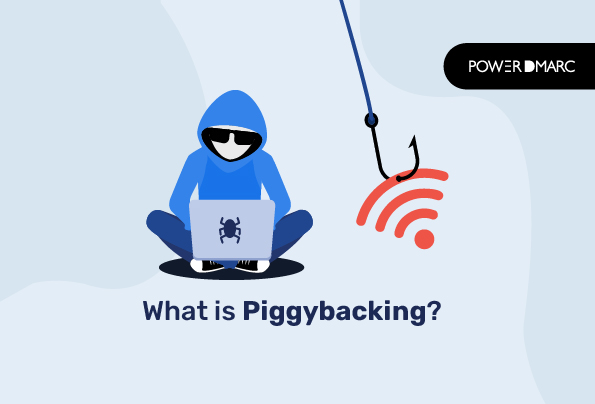In cybersecurity, piggybacking refers to a specific type of attack where an unauthorized user gains access to a secure system or network by exploiting the access privileges of an authorized user. This technique is also known as “credential sharing” or “access sharing” and can lead to serious security breaches if not properly addressed.
Key Takeaways
- Piggybacking refers to unauthorized users accessing secure systems by exploiting the access privileges of legitimate users.
- Wi-Fi piggybacking can slow down network speed and may lead to malicious activities like data breaches and malware distribution.
- Preventing piggybacking attacks requires a combination of strong security policies, employee training, and the use of multi-factor authentication.
- Utilizing robust encryption methods, such as WPA and WPA2, is crucial for protecting wireless networks from unauthorized access.
- Regularly updating security measures and software is essential to maintaining a strong defense against piggybacking and other cybersecurity threats.
What is a Piggybacking Attack?
Piggybacking is the process of using a wireless connection to access an internet connection without authorization. Its objective is to gain free network access which is often exploited to attempt malicious activities like data breaching and dissemination of malware. It can also lead to slower internet speed for all the systems connected to the network.
Even if piggybacking isn’t attempted with malicious intent, it’s still illegal because the user is taking undue advantage of a service they haven’t paid for.
Simplify Security with PowerDMARC!
Piggybacking Definitions and Types
1. Password Sharing
When an authorized user shares their login credentials with an unauthorized individual, allowing them to gain access to the system or network.
2. Physical Access
When an unauthorized person gains physical access to a secure area by following closely behind an authorized person or using their physical access card or key.
3. Remote Access
When an unauthorized user gains access to a system or network remotely using stolen or leaked credentials of an authorized user.
4. Wi-Fi Piggybacking
This is a specific case of piggybacking in which an unauthorized person gains access to someone else’s Wi-Fi network without permission, often by using weak passwords or exploiting security vulnerabilities.
5. Social Engineering
In some cases, attackers may use social engineering techniques to manipulate an authorized user into granting them access to the system or network.
What is Piggybacking in Computer Networks?
In computer networks, piggybacking refers to a technique used in data transmission protocols to improve efficiency and reduce overhead. It is primarily associated with the transmission of acknowledgment messages in response to received data.
The concept of piggybacking revolves around combining multiple pieces of information within a single transmission to make more efficient use of network resources. Based on this the two main types of piggybacking are:
1. Piggybacking Acknowledgments
In many network protocols, such as the Transmission Control Protocol (TCP), when data is sent from one device (sender) to another (receiver), the receiver acknowledges the receipt of the data back to the sender.
Instead of sending a separate acknowledgment (ACK) message for each data packet received, piggybacking allows the receiver to include the acknowledgment within the data packet it sends back to the sender.
This way, both data, and acknowledgment are sent together, reducing the number of separate packets and the associated overhead.
2. Piggybacking Data
Similarly, when the receiver wants to send data back to the sender, it can take advantage of piggybacking by including its data along with the acknowledgment message.
This is particularly useful in cases where the sender and receiver are alternating their roles as data sender and receiver frequently, as it helps minimize the number of separate packets being exchanged.
Ultimately piggybacking can help reduce the number of individual transmissions, resulting in enhanced network utilization efficacy and improved overall performance. It is especially beneficial in situations where network resources are limited or when optimizing latency is essential.
However, it’s important to note that piggybacking must be carefully implemented and considered, in the design of network protocols to avoid potential issues such as message collisions or excessive delays caused by waiting for data to be combined with acknowledgments.
How Does Piggybacking Work?
Piggybacking attacks were easier and more common in the past because Wi-Fi networks were unencrypted. Anyone within the signal’s range could access a network without entering a security password. So, hackers just had to be in the range of a Wi-Fi hotspot’s signal and select the chosen network from the options presented.
However, in today’s date, most Wi-Fi networks are encrypted and secured with passwords, making these attacks more challenging and less common. It’s still possible for threat actors to access a network if they have the password or can crack the encryption.
Tailgating Vs Piggybacking
In cybersecurity:
- Tailgating involves physically following an authorized person to gain access to a restricted area or building.
- Piggybacking involves exploiting an active session or an established user’s credentials to gain unauthorized access to digital systems or networks.
Both tailgating and piggybacking are security risks that organizations need to address through security policies, access controls, and employee awareness training to prevent unauthorized access and protect sensitive information.
What Does Piggybacking Look Like?
In piggybacking, the authorized person realizes that they’ve let an intruder in. However, they think the intruder had a legitimate reason to be there. You can imagine it as a situation where an employee is talking to a perpetrator claiming to have a meeting with someone in the office, and they let them in.
Piggybacking Security: How to Prevent Piggybacking?
There are several ways to prevent piggybacking attacks. Let’s see what you can do.
Use Multi-Layered Security For Restricted Areas
Use biometrics to add an extra layer of security against piggybacking. This will restrict hackers from accessing your network quickly.
Update Anti-Malware and Anti-Virus Software
Ensure your anti-malware and anti-virus programs are updated and patched. This will protect your data even if perpetrators gain access to your IT infrastructure.
Implement, Update, and Follow IT Policies and Procedures
If you’ve policies and procedures in place regarding the safety and protection of technology, ensure everyone follows them. You must also update them from time to time to reflect the latest threats.
Protect Login Credentials
Login credentials are beneficial to hackers, so they are always looking for them. They deploy various social engineering techniques to obtain them. You can use multi-factor authentication for additional security.
Educate Your Employees
Schedule cybersecurity awareness training for employees of all seniority levels. It’s a cost-effective and practical way to prevent attacks like tailgating and piggybacking. Ensure each employee is well trained to understand the role they play in responding to and reporting threats.
Use Encryption
WPA and WPA 2 are robust encryption systems that can be used to minimize the probability of attackers intercepting a communication.
Use a Password
Set a strong password that has to be used to access the wifi connection of your workplace. Also, change the default password that comes with your router and use something that isn’t too obvious to crack. You can also create a wifi QR code that makes it easy for employees and guests to connect to your network without needing to enter the password manually.
Avoid Broadcasting Your Wireless Network’s Name
Don’t broadcast your wireless network or SSID to passers-by. Instead, select an unguessable SSID name to make it harder for hackers to crack the password.
Restrict Internet Access to Specific Hours
Buy Wi-Fi routers that allow you to configure internet access to only specific hours of the day. This will minimize the chances of becoming a victim of piggybacking attacks.
Final Thoughts
Piggybacking is a concerning cybersecurity practice that highlights the importance of maintaining strict access controls and vigilance in today’s interconnected world. As technology continues to advance, the risk of unauthorized access to sensitive information becomes more prevalent.
Cyber attackers are increasingly exploiting the human element, capitalizing on moments of carelessness or oversight. Therefore, it is crucial for organizations and individuals to be aware of the threat posed by piggybacking and take proactive measures to safeguard their digital assets.
Implementing strong authentication mechanisms, promoting a culture of security awareness, and regularly reviewing access policies are all essential steps in fortifying defenses against this deceptive and insidious technique.
- What Is Spam Email? Definition, Types & How to Stop It - July 11, 2025
- How to Tell if an Email Is Fake: Red Flags to Watch Out For - July 11, 2025
- Have I Been Pwned? Steps to Check, Fix, and Stay Safe - July 11, 2025




